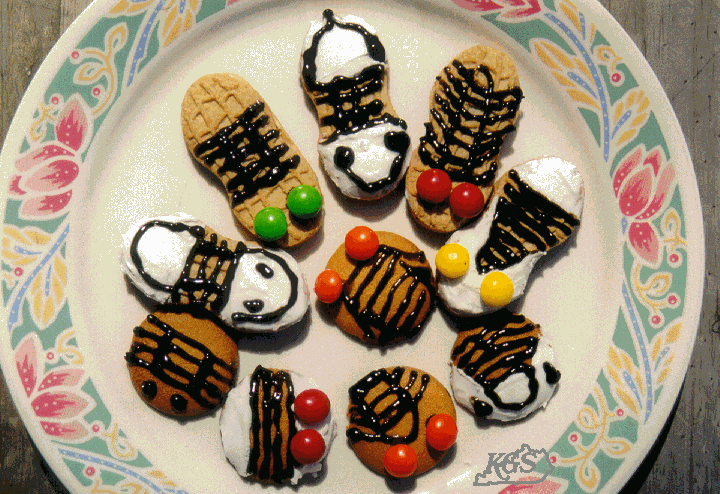

KGS Home >
Earth Science Education
Even Easier Trilobite Cookies
Stephen Greb, Kentucky Geological Survey
If you don't want to make cookies yourself (see Trilobite Cookies), or don't want to spend time dipping store-bought cookies in chocolate (see More Trilobite Cookies), then why not use store-bought cookies and store-bought icing? In fact, this recipe allows students to make their own trilobites in the classroom or around the kitchen table, rather than having the instructor make the cookies and having the students just eat them.
Background:
Trilobites were arthropods that lived in the seas of the Paleozoic Era. They are called trilobites because their bodies were divided into three parts. They were one of the first widespread, complex animals of the Paleozoic, starting out in the beginning of the Cambrian Period, more than 500 million years ago. They became extinct at the end of the Paleozoic Era, 250 million years ago. Trilobites are historically important because they were one of the first animals with complex eyes. Like many arthropods, the trilobite's soft body was covered with a hard shell, called an exoskeleton. Insects, which are arthropods, often have an exoskeleton. That's why beetles crunch if you step on them. For more information about trilobites, go to Trilobite Fossils. Students can use pictures of trilobite fossils or just use their imagination to make tasty treats using the following simple recipe.
Click here for a trilobite fact sheet (pdf file formats)
Trilobite head shapes and ornaments (pdf file formats)
You'll need:
Preparation time: 15-30 minutes, depending on how many cookies you make
Recipe:
1. Place undecorated cookies on a plate or paper towel.2. Decorate cookies using tube icing. Try to divide the cookies into three parts. You can spread icing on the top third and bottom third to model the head (cephalon) and tail (pygidium) of the trilobite. You can also divide the cookie into three parts along the long axis and spread icing on both sides, leaving the middle strip bare. This models the three longitudinal lobes of the trilobite. You can use small tube icing to make segments across the cookie, or bumps, or spines. Use your imagination.
3. Finish by placing two candy eyes on the head. You can use a dab of icing as "glue" to help hold the candy eyes down. If the eyes don't stick, it's okay; some trilobites lacked eyes and were blind.
4. Eat and enjoy!
